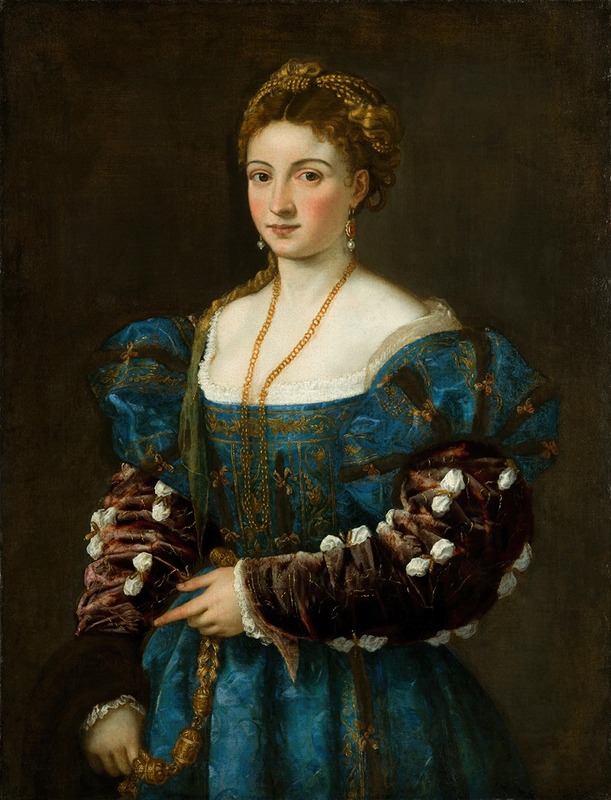
Portrait of a Lady
A hand-painted replica of Titian’s masterpiece Portrait of a Lady, meticulously crafted by professional artists to capture the true essence of the original. Each piece is created with museum-quality canvas and rare mineral pigments, carefully painted by experienced artists with delicate brushstrokes and rich, layered colors to perfectly recreate the texture of the original artwork. Unlike machine-printed reproductions, this hand-painted version brings the painting to life, infused with the artist’s emotions and skill in every stroke. Whether for personal collection or home decoration, it instantly elevates the artistic atmosphere of any space.
"Portrait of a Lady" is a painting by the renowned Italian Renaissance artist Titian, also known as Tiziano Vecellio. Titian, born around 1488/1490 and dying in 1576, was a leading figure of the Venetian school of the 16th century and is celebrated for his masterful use of color and his innovative compositions.
The exact date of "Portrait of a Lady" is not definitively known, but it is generally believed to have been painted in the 1530s or 1540s, during the height of Titian's career. This period was marked by his development of a more mature and expressive style, characterized by rich, vibrant colors and a keen attention to the psychological depth of his subjects.
The painting depicts an unidentified woman, often referred to simply as "La Bella" or "La Bella Donna." She is portrayed in a three-quarter view, gazing slightly to her left. The lady is dressed in luxurious attire, indicative of her high social status. Her clothing features intricate details, such as fine embroidery and sumptuous fabrics, which showcase Titian's skill in rendering textures and materials.
One of the most striking aspects of the portrait is the woman's serene and composed expression, which conveys a sense of dignity and grace. Her hair is elegantly styled, and she wears a delicate headpiece, further emphasizing her refined appearance. The background of the painting is relatively plain, which serves to highlight the figure of the lady and draw attention to her face and attire.
Titian's use of color in "Portrait of a Lady" is particularly noteworthy. He employs a rich palette, with deep reds, golds, and blues, creating a harmonious and visually appealing composition. The subtle gradations of light and shadow add depth and volume to the figure, enhancing the lifelike quality of the portrait.
The identity of the woman in the portrait remains a mystery, as there are no definitive records or inscriptions that provide clues about her name or background. Some art historians have speculated that she may have been a member of the Venetian nobility or a prominent figure in society, but these theories remain unconfirmed.
"Portrait of a Lady" is housed in the Palazzo Pitti in Florence, Italy, where it is part of the extensive collection of Renaissance art. The painting is admired for its technical excellence and its ability to capture the essence of the subject with both realism and elegance.
Titian's portraits, including "Portrait of a Lady," have had a lasting impact on the history of art. His innovative approach to portraiture, characterized by a focus on the individuality and inner life of his subjects, influenced subsequent generations of artists and helped to shape the development of Western art.
In summary, "Portrait of a Lady" by Titian is a masterful example of Renaissance portraiture, showcasing the artist's exceptional skill in capturing the beauty and personality of his subject. Despite the mystery surrounding the identity of the woman depicted, the painting remains a testament to Titian's enduring legacy as one of the greatest painters of his time.


















